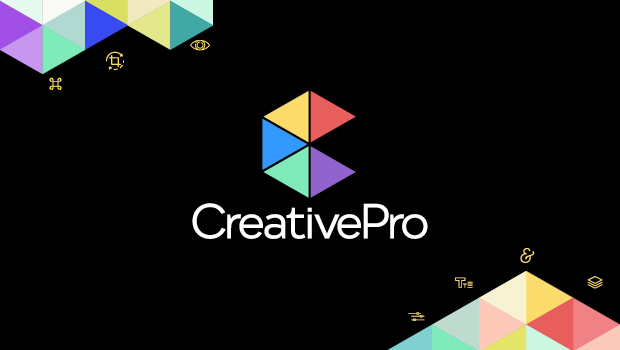Digital Video 101: Choosing the Right Video Format

Most aspiring videomakers hardly know what they’re getting themselves into when they first mutter the phrase, “I want to make my own film.” Whether you’ve set your sights on making the next “Citizen Kane,” the next award-winning commercial featuring talking animals, or merely a bit of video to entice surfers to your Web site, you have a lot of choices to make before you can get down to the fun of shooting and editing your video. Paramount among these is what video format you’ll be using.
As we discussed in the first article of this series, one of biggest issues you’ll decide is whether to shoot on an analog or digital video system. Digital systems typically provide much higher image quality, and digital-format tapes can be copied with no generational loss, in sharp contrast to their analog counterparts. Getting your footage into your system for editing is also much easier with digital systems, because the video merely needs to be transferred to the system (typically across a Firewire interface) rather than captured and digitized.
The indecisive will have something to obsess over even after the analog-vs.-digital decision has been made, particularly if digital comes up the winner. Different formats are typically associated with specific types of cameras and interfaces, so using some formats will preclude the use of certain cameras and decks. In addition, there are quality differences between different digital video formats, so it’s important to choose the format that will best serve your particular project.
Final Destination
Before you can intelligently select a format, it’s important to know where your final product will end up. Are you shooting video for Web cast? Broadcast TV? DVD mastering? Film projection? Different delivery media have different quality concerns and technical requirements, so it’s best to know what your final video destination is. If you think you might ultimately re-purpose your footage for a different — possibly better — delivery medium, then you might need to select a higher-quality format.
DV? MiniDV? DVCPro? DVCAM?
Most users will probably make their format choice based on cost and convenience. If these issues are your primary concern, then MiniDV is probably the format for you. Originally intended as a replacement for home video formats such as VHS, VHS-C, and Hi8, the DV format has quickly exceeded manufacturer expectations and is regularly used for everything from home movies to industrial videos to feature film releases.
It’s important to note that there is no difference technically between the DV format and the MiniDV format. Many videotape formats have traditionally had a large size cassette for studio work and a smaller cassette for portable work. MiniDV is just the portable version of the DV format.
Like most digital video formats, MiniDV heavily compresses its video using a special piece of software called a codec (compressor/decompressor). Typically, video codecs work by discarding color information that your eye is not sensitive enough to see, and by performing various temporal compression schemes, whereby the only information recorded on the tape is the information that changes from one frame to the next.
The amount of color a particular codec stores is referred to as its color-sampling ratio. DV has a color-sampling ratio of 4:1:1 meaning that for every pixel there are four samples of luminance information and two samples of color information. This amount of color compression results in visible degradation of the image, but many viewers won’t notice this degradation.
DV has a data rate of 25 megabits per second (Mbps), meaning that each second of video requires 25 megabits (roughly 3.1 megabytes) — of data per second. The standard Firewire interface built into many computers these days can transfer about 12.5 megabytes per second, which should allow it to handle the rate of the DV format easily.
There are digital video formats that produce better-looking video, but there’s really very little wrong with DV’s image quality. In fact, many people rate DV’s quality as higher than Betacam SP — the professional analog tape format that is still the broadcast TV standard.
DVCPro and DVCAM are variations on the standard DV format. Both 25 Mbps formats, these two higher-end standards actually use the exact same codec as standard DV. These formats were designed for more rugged applications such as electronic news gathering. Consequently, their tape formulation and cassette housings are much sturdier than DV, and the cameras and decks that are available for these formats are much higher quality.
DVCPro50 is a variation of DVCPro with a 50 Mbps data rate and far less compression. Aimed squarely at broadcast television production, DVCPro50 also provides variations such as DVCPro50 Progressive, which provides progressive, rather than interlaced scanning. Overkill for the typical user, DVCPro50 bears looking at if you’ve got a high-end budget and serious broadcast concerns.
Digital8
Sony’s Digital8 format builds on an 8mm cassette that uses the same data rate and color sampling ratio as DV, but with a slightly lower resolution. The appeal of Digital8 is its ability to play back analog 8mm tapes. If you have a closet full of 8mm footage, you’ll be glad to know you can pop your old 8mm tapes into your Digital8 camcorder or deck and edit them using your Firewire-based editing system.
Unfortuantely, as appealing as the idea of using old tapes in your new camcorder may be, we can’t recommend it. Right now, if you’re an analog 8mm user, your problem is that the format of choice has changed. Rather than adopt an intermediate format, why not go ahead and make the leap to what has quickly become the new standard? In addition to avoiding further compatibility problems later, you’ll end up with equipment that delivers higher-quality than Digital8. The easiest way to deal with your old analog footage is to buy a DV camera that has an analog input of some kind. Then, you can simply dub your 8mm footage onto DV and edit away.
Digital Betacam: Or, How I Learned to Stop Worrying and Spend All My Money
If quality is your primary concern and money is no object, then your choice is very simple: Go with Digital Betacam. Originally created by Sony as a digital upgrade to Betacam SP, Digital Betacam (or “DigiBeta” if you’re in the know) offers extraordinary image quality and is used with professional, high-end equipment. In addition, DigiBeta decks can play back Betacam SP tapes.
One of the easiest ways to compare Digital Betacam footage to standard DV is rent the movie “The Buena Vista Social Club”. The film was shot primarily on DigiBeta, but there are a number of scenes shot with standard MiniDV. Spotting the lower-quality shots should not be a problem. (Of course, in some cases, the lower quality of the MiniDV footage is the fault of the camera, not the tape format. Nevertheless, this movie provides a good example of what a professional cinematographer was able to do with both formats just a few years ago.)
Standard Video
There are several different video standards used to encode the signal that is fed to a television or video monitor. US and Japan televisions typically use the NTSC standard while European televisions use a slightly higher-resolution standard called PAL. France, Russia, and many Asian countries use yet a third standard called SECAM.
In most cases, you’ll simply use the standard used in your country of residence, but there are some other considerations to weigh. Obviously, if you’re producing video for use in another country where a different standard is used, then using that standard when shooting will save you a lot of time and money that would otherwise be spent in costly conversions.
If your goal ultimately is to transfer your finished video to film then you might want to consider shooting in PAL. In addition to its slightly better image quality, PAL has a frame rate of 25 frames per second (vs. NTSC’s 29.97 frames per second), making it easier to convert PAL video to film’s 24 fps rate. Disclaimer: Before you make this sort of decision, you should consult with your film transfer facility to see what they recommend.
Other Concerns
There are many other characteristics that separate one digital video format from another. Some use rectangular pixels (either horizontal or vertical) while some use square. Because of their higher data rates, some formats use hardware built around an SDI (Serial Digital Interface) interface, rather than a Firewire interface. Some formats allow for widescreen aspect ratios (16:9 as opposed to broadcast television’s 4:3). These are all concerns that should be weighed when choosing a format, but in most cases these issues will be resolved by default.
For example, it will be much cheaper and easier to add a Firewire port to your computer (if it doesn’t already have one) than an SDI port. Consequently, you’ll probably prefer a Firewire-based format. Pixel shape can always be dealt with using your editing software, and the only formats that provide true widescreen aspect ratios are the expensive DVCPro50 and Digital Betacam formats.
So Which Should I Choose?
Depending on the type of project you’re creating, we recommend the following formats.
- If your video is going to be streamed over the Web, or delivered via CD-ROM, then you can use anything that offers better-than-Web quality. Though VHS and Hi8 qualify, you still might want to use a newer digital format: It’s probably wise to start with the best quality you can manage. A digital format will provide higher quality if you ever want to re-purpose your footage, and will provide much more flexibility when shooting in low light, or when shooting blue-screen footage for compositing.
- If your final project will be delivered on videotape, then DV, DVCAM, and DVCPro will provide all the quality and shooting options that you’ll need.
- Broadcast users will ideally want to choose one of the broadcast standards like Digital Betacam or DVCPro50. Shooting with any of the 25Mbps formats (DV, MiniDV, DVCAM, DVCPro) will likely provide good quality, but at some point you’ll probably need to do an expensive BetaCam transfer.
- If film projection is your ultimate goal, you can feel free to shoot any format you like, given that everything will ultimately be transferred to film. However, though we’ve seen plenty of great documentaries shot on Hi8 (“Hands on a Hard Body,” “Speaking in Strings”), go with a digital format if quality is a primary concern. MiniDV and DV are quite capable (and even better if you choose PAL versions), but DVCAM and Digital Betacam are the preferred choice.
Don’t Forget the Hardware
Format isn’t everything, of course. A lousy camera will produce lousy images no matter what format it records to. After format, your choice of camera will have the biggest effect on the quality of your final image. In our next installment, we’ll discuss the issues you need to consider when selecting a digital video camera.
This article was last modified on January 18, 2023
This article was first published on September 6, 2000




